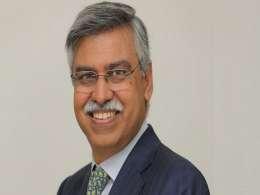General Electric Co plans to test a new management model in India that the largest U.S. conglomerate believes will help it flourish through a long period of sluggish post-recession growth in developed markets.
\n
Rather than taking its high-end, high-cost equipment and finding ways to make it less expensive for developing-world customers, GE needs to focus on designing lower-cost technologies that will appeal to customers in emerging markets, Chief Executive Jeff Immelt argued in an article published on Tuesday in the Harvard Business review.
\n
Doing so might mean breaking away from the management approach the world's largest maker of jet engines and electricity-producing turbines has relied upon for years -- having enormous, product-focused divisions that span the globe -- in favor of smaller, country-focused teams, Immelt wrote in an article titled "How GE is Disrupting Itself."
\n
The shake-up is intended to boost GE's chances of success in emerging markets. The Fairfield, Connecticut-based company expects those areas to expand two to three times as fast as the United States and Europe, where it sees 1 to 3 percent growth for the next few years.
\n
"Success in developing countries is a prerequisite for continued vitality in developed ones," Immelt wrote in an article co-authored with Dartmouth University professors Vijay Govindarajan and Chris Trimble. "If GE doesn't come up with innovations in poor countries and take them global, new competitors from the developing world -- like Mindray, Suzlon, Goldwind and Haier -- will."
\n
He noted that GE's revenue in China is on track to grow by 25 percent this year -- a sharp contrast to the 15 percent drop in companywide revenue for which Wall Street is braced.
\n
The company plans to appoint a CEO of its Indian operations, though it has not yet named that person, according to spokeswoman Lisa Lanspery.
\n
HEALTH CARE MODEL
\n
The Indian model will be a broader test of an approach the company's health care arm used in China, where it developed a $15,000 laptop-based ultrasound machine that sells for a fraction of the $100,000-plus of the appliance-sized units it sells to U.S. hospitals.
\n
"With far smaller per-capita incomes, developing countries are more than happy with high-tech solutions that deliver decent performance at an ultra-low cost -- a 50 percent solution at a 15 percent price," Immelt wrote.
\n
The reasoning is that local executives will have a better chance of finding niches in local markets and filling them than would engineers sitting at the company's main research center in Niskayuna, New York.
\n
Govindarajan, who also serves as GE's chief innovation consultant, said the shift from a global management model to a national one is not without risk.
\n
"It is a risky move, but this is the way I would put it: If you don't do it, it is a lot more risky," Govindarajan said in an interview. "Then what happens is a local competitor in India will create those products, those radical solutions ... Then they will come after GE in their home market."
\n
GE, for instance, found an unexpected market for its portable ultrasound machines in U.S. ambulance crews.
\n
Govindarajan also noted that the company would likely need to set up country-specific autonomous management chains only in a handful of fast-growing economies, not in every nation where it does business.
\n
"Right now this approach is needed only selectively in strategic markets," Govindarajan said. "It is really half a dozen or less countries. Those are where, for the next 25 years, the big opportunities are."
\n





